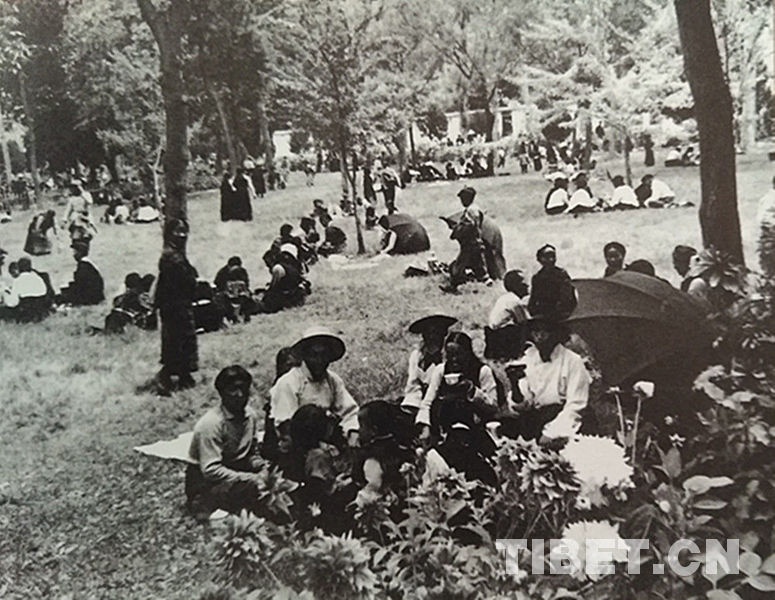Traditional Tibetan folk dance glows with new vitality
Despite being a veteran performer of the traditional Xianzi Dance, 58-year-old Tashi Wangdu had never staged a performance in front of a big audience.
Yet, he finally got his long-awaited chance.
Xianzi Dance is a kind of folk art that combines song, dance and string music in southwest China's Tibet Autonomous Region, with a long history dating back to the Tang Dynasty (618-907).
As the first stop in Tibet along the ancient Tea Horse Road, Mangkam County, in the city of Qamdo, boasts rich and colorful folk culture due to its unique geographical features and profound cultural heritage.
It was here where Tashi Wangdu joined some 3,000 other Xianzi dancers: men and women, young and old.
Dressed in traditional Tibetan costumes, they performed with sheer delight on the "stage" -- a large tract of grassland, changing formations from time to time, sometimes gathering to the center, sometimes spreading out and around, and sometimes holding hands in circles.
"In Tibetan language, Mangkam refers to a place of goodness and kindness," said Tashi, adding that since childhood, he and his family would find an open space to light a campfire and dance together when celebrating holidays.
Tashi learned Xianzi Dance from his father and brother when he was five, and now he teaches his grandson the dance when he has time.
The veteran dancer arrived at the grassland stage one day early to get himself prepared. On the day of the performance, he wore a brand-new Tibetan costume and tied up his long hair.
Their performance lasted more than half an hour. Beads of sweat dotted Tashi's forehead, and he wiped them away with smile lines appearing in the outer corners of his eyes.
"I've been doing Xianzi Dance for decades, but this is the first time I've ever danced with so many people," he said. "Our traditional culture has made a comeback."
According to Changdren, deputy director of the county cultural bureau, Xianzi Dance is the pearl in the resplendent crown of art in Mangkam.
"There is a folk belief that Xianzi Dance brings happiness that never ends," said Changdren, noting that Xianzi Dance can be performed anywhere and the number of dancers does not matter. "Sometime people in Mangkam would dance all day long, passing on the folk art to younger generations."
The State Council listed Xianzi Dance as a national intangible cultural heritage in 2006.
To preserve the precious tradition, folk artists in Mangkam have been teaching and performing Xianzi Dance in schools. The dance has also been adapted to gymnastic exercises in 30 primary and secondary schools in the county.
Several Xianzi Dance competitions have been held over the past few years, according to Changdren.
"We are expecting more talented dance producers and performers to improve the creativity and performing skills of Xianzi Dance, thus promoting tourism and our excellent Tibetan culture," Changdren said.
Tibet Stories

Across China: Highland barley turns cash cow for Tibetan farmers
Once reeling under poverty with barely enough harvest to make ends meet, Tenzin is now able ...

